Last Updated on
Continued from TrackingPoint Part 1.
In Practice
A rifle that zeroes, adjusts sights, and fires itself? What sorcery this be? No sorcery here, just a very creative application and careful integration of many existing technologies. Software computing ballistics has been with us for years and available on palm-sized devices for over a decade. Cell phones can crunch these numbers. The problem is accounting for all the possible variables. Even the most basic ballistics program requires input regarding sight height, muzzle velocity, ballistic coefficient and the like. Reasonable guesses or slight variation gets you close, but not exact. There are also variations within the ammunition, shot-to-shot variations in muzzle velocity, and within the rifle itself. Does your pet load shoot the exact same velocity in your rifle as it did when you tested it 200 rounds ago?
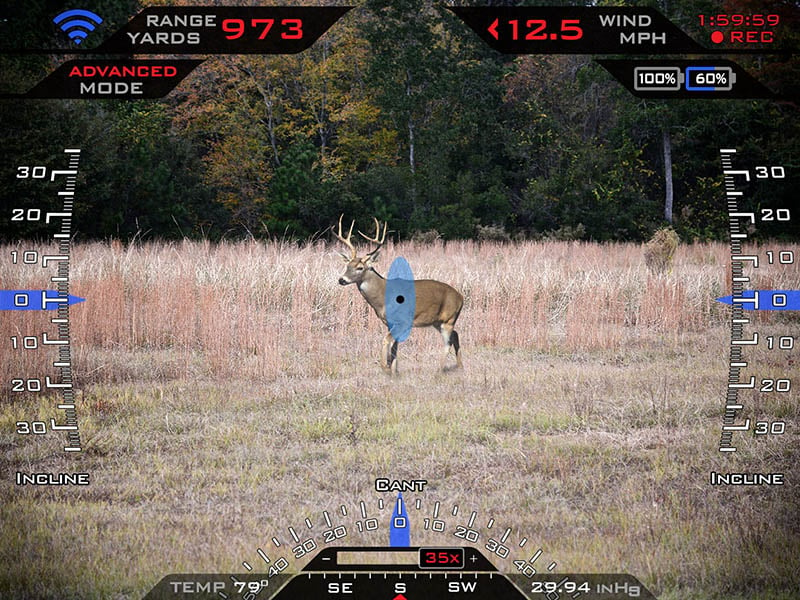
Jason Schauble calls this the problem of nickels and dimes, where small errors start to add up. TrackingPoint reduces much of this by making their XactSystem PGFs closed systems and sold complete, with rifle, sight, software, tracking system and ammunition as an integrated package. Surgeon Rifles, with a guaranteed 0.5 MOA accuracy standard or better thanks to its modern manufacturing processes, are the sole supplier of the rifle component in a TrackingPoint PGF. Barnes Bullets custom loads a specified cartridge for each system and does so with a standard deviation of ten feet per second or less. The optic and tracking system is permanently attached to its PGF and not available separately.
These PGFs are based on Surgeon Rifles and will, obviously, safely and accurately shoot any appropriate cartridge it’s chambered for. However, TrackingPoint has spent considerable time and expense taking Doppler radar measurements of their chosen load and has modeled this in its ballistics software. Furthermore, the specific effects of wear with this ammunition over the course of a barrel’s life in this rifle is also modeled. Changing an internal variable changes the results, even if slightly, and this compounds in a stack up of error.
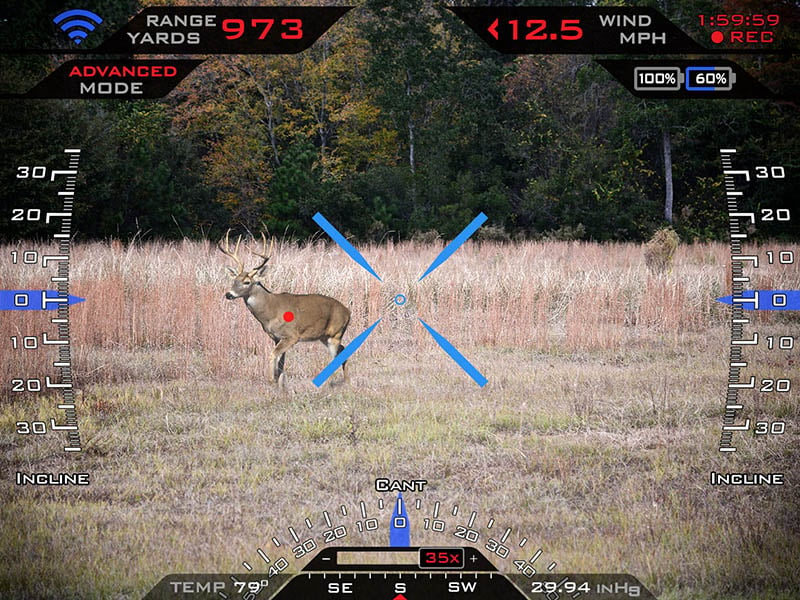
With all these variables internal to the rifle-ammo combination controlled, external variables must be accounted for. Temperature and barometric sensors are not new and can feed this information in. For the past several years, consumer electronics such as mobile phones and digital cameras have included tilt sensors and accelerometers, detecting roll, pitch and proper acceleration. This feeds cant, slope angle and rifle movement in as well. Laser range finders are also commonly available and home video game systems often include object movement detection, allowing players to play games without a controller.
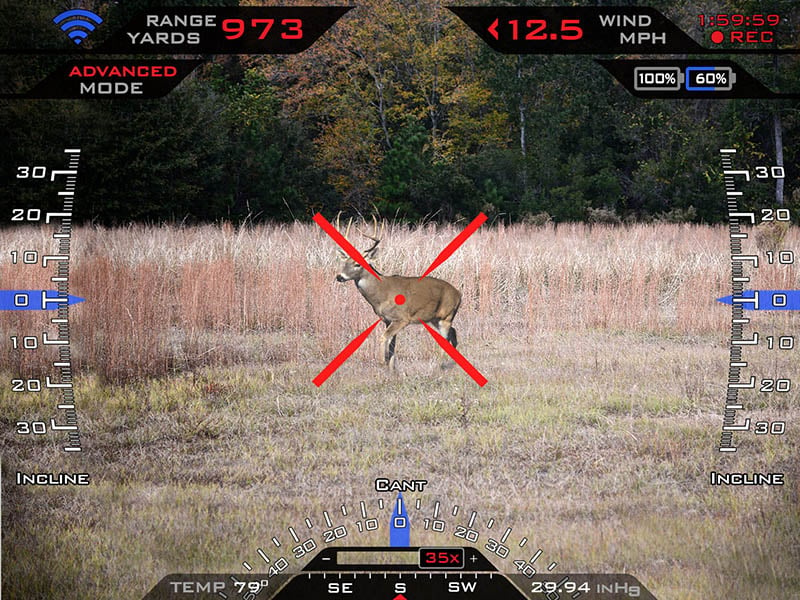
Much of the needed technology to make this work already existed in the consumer market space. TrackingPoint put the pieces together. So, does it work? What is a PGF useful for? Does it make marksmanship obsolete?
After touring their facility, Jason Schauble took me to Best of the West Shooting Sports range in Liberty Hill, just outside Austin. After a quick demo, I plopped down behind an XS1 and had a go. We went through a series of dry shots to let me learn the controls. On the optic’s top, starting from the front is a focus knob and zoom rocker, going from 6x to 35x. Focused in, the image was very clear at any magnification. Knowing I had to estimate my own wind, I backed off the focus like a spotting scope in an attempt to read mirage. I could see some, but the image appeared slightly pixelated. The optic is actually presenting a digital image to the shooter’s eye. I mentioned this to Jason and he noted the company is already working on a High Definition version. This is similar to how military units, such as thermal sights, work and means that night vision capability can readily be included.
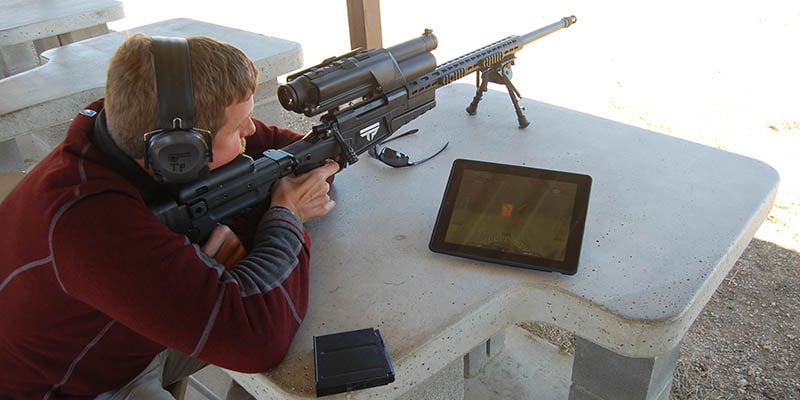
The TTX sequence was easy to learn. Unlike a fired shot, if the tag point is wrong, just push the button again and redo it. When the tag is right, hold down the trigger and move the reticle to the tag point. The system doesn’t fire unless the trigger is depress and the reticle intersects the tag point. Using an iPad, Jason could see what I saw in the optic and teach me what to do. Best of the West has steel targets at 250, 500, 750 and 1000 yards. Within minutes of learning the TTX sequence and playing with the system dry, I entered in wind correction and went live, resulting in a first round hit on all targets shot at at each of the four distances. Mind you, this is with a rifle I had never fired, didn’t zero or have data for. All the sight dope is built in.
Feeling froggy, I had a tilt from standing with an XS3. Jason mentioned that Daniel Horner of the AMU had done this during his visit. After getting my tag right, I armed the system and had a first round hit at a 250 yard target with a factory zeroed rifle and no sight data with a rifle I had never fired before from standing.

The Verdict
While my hands-on experience wasn’t conclusive, I can say the system works as advertised. TrackingPoint has done extensive testing and the question isn’t if their XactSystem PGFs work. They do. This is a release of new technology and a new type of small arm equipment, the Precision Guided Firearm.
The shooter is still part of the equation. Familiarization is possible within minutes, but it takes practice to efficiently and quickly tag and track. A sloppy, wobbling hold will make tagging difficult or impossible and the shooter will have to track back to an established tag. The barrel still has to point at the target to get a hit and the shooter has to put it there. PGFs don’t make the rifle more accurate or powerful, but make it easier for a shooter, especially one of less skill, to exploit that capability and to not let a shot go unless it really is on target with all the ballistic variables factored in.
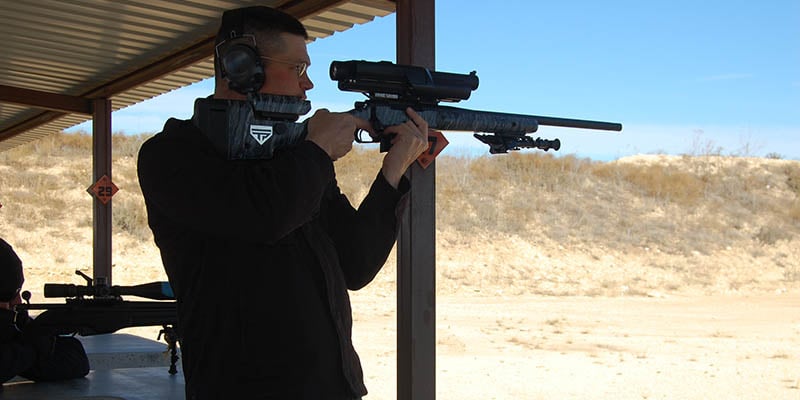
The potential for military use is huge. Rather than fight military bureaucracy, TrackingPoint decided to release this to the open market. Military contracts are easier to arrange with COTS (Commercial Off The Shelf) equipment. The US Army spends six figures to install Engagement Skills Trainer (EST) 2000 systems for training. Because XactSystem PGFs is networkable and the optical image is a digital projection, an app running on an iPad tablet can run training exercises and simulations, making it a self contained training system. There is no need to zero or record data, so live fire can focus on other training. Consider the M110, basically a Knight’s SR-25 with conventional scope and accessories, costs the Department of Defense over $10,000 and a PGF doesn’t look so expensive.
This will appeal to professional hunters guiding clients. The sad truth is many people able and willing to spend five figures on a guided hunt won’t bother learning to shoot well enough to have a successful hunt. Poor marksmanship skills are a common complaint among PHs about their clients. Having a rifle on hand means clients don’t have to bring one and the guide is confident of the zero. Novice hunters being guided can tag game as often as needed until a good shot is set up. PHs can monitor selected shot placement and record the whole thing for a client to enjoy later.
Smart technology is now a reality in small arms. Precision Guided Firearms don’t replace rifles, they are an entirely new equipment class. As time goes on, the price point may drop enough that this will be practical in more mundane rifles. The goal of all shooting equipment is to make hitting the target easier. Just as rifled barrels and optical sights helped, technology continues to march.




Leave a Reply